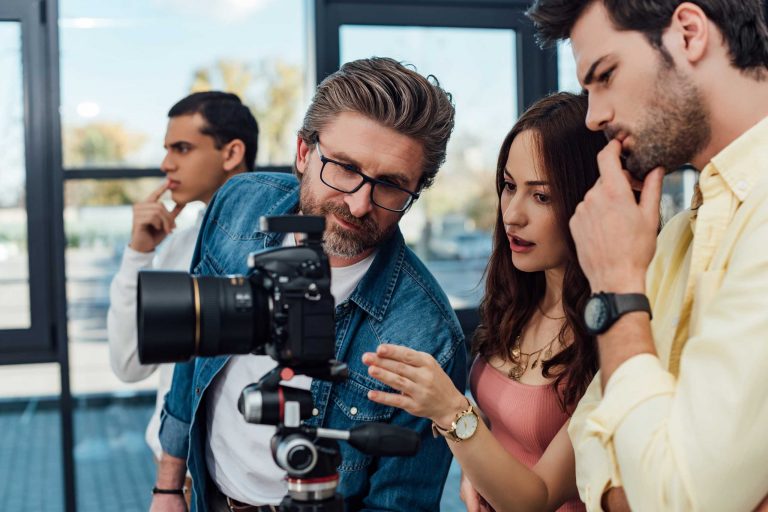Cinema is a visual language, and a director’s understanding of cinematic techniques defines how effectively a story is told. Beyond dialogue and plot, visuals communicate mood, emotion, and subtext, creating an immersive experience that captivates viewers.
Camera Work and Composition
The way a scene is framed dramatically affects audience perception:
- Use camera angles to establish power dynamics or emotional tension.
- Experiment with framing, depth, and perspective to enhance storytelling.
- Combine wide, medium, and close-up shots for rhythm and variety.
Thoughtful composition transforms ordinary shots into compelling visual narratives.
Lighting and Color
Lighting shapes the atmosphere of every scene, while color influences mood and symbolism:
- High-contrast lighting can intensify suspense or highlight conflict.
- Soft, diffused light evokes intimacy or tranquility.
- Color palettes reinforce themes, evoke emotions, and guide audience focus.
Directors collaborate closely with cinematographers to design light and color that amplify the story’s impact.
Movement and Editing
Dynamic camera movement and precise editing guide audience attention and enhance storytelling:
- Tracking and crane shots create fluid motion and engagement.
- Strategic cuts control pacing and heighten emotional resonance.
- Montage sequences can condense time and emphasize thematic elements.
The interplay between camera movement and editing ensures the narrative flows smoothly while maintaining visual interest.
Sound and Atmosphere
Sound design complements visuals to enrich the cinematic experience:
- Ambient sounds and foley effects build realism.
- Music underscores emotion and sets tone.
- Silence can be a powerful tool for tension or reflection.
A director’s attention to auditory elements ensures that the audience is fully immersed in the world of the film.
Conclusion
Mastering cinematic techniques allows directors to tell stories beyond words. By combining camera work, lighting, color, movement, editing, and sound, filmmakers can craft unforgettable visual experiences. Understanding these elements empowers directors to transform concepts into films that engage, move, and inspire audiences worldwide.




